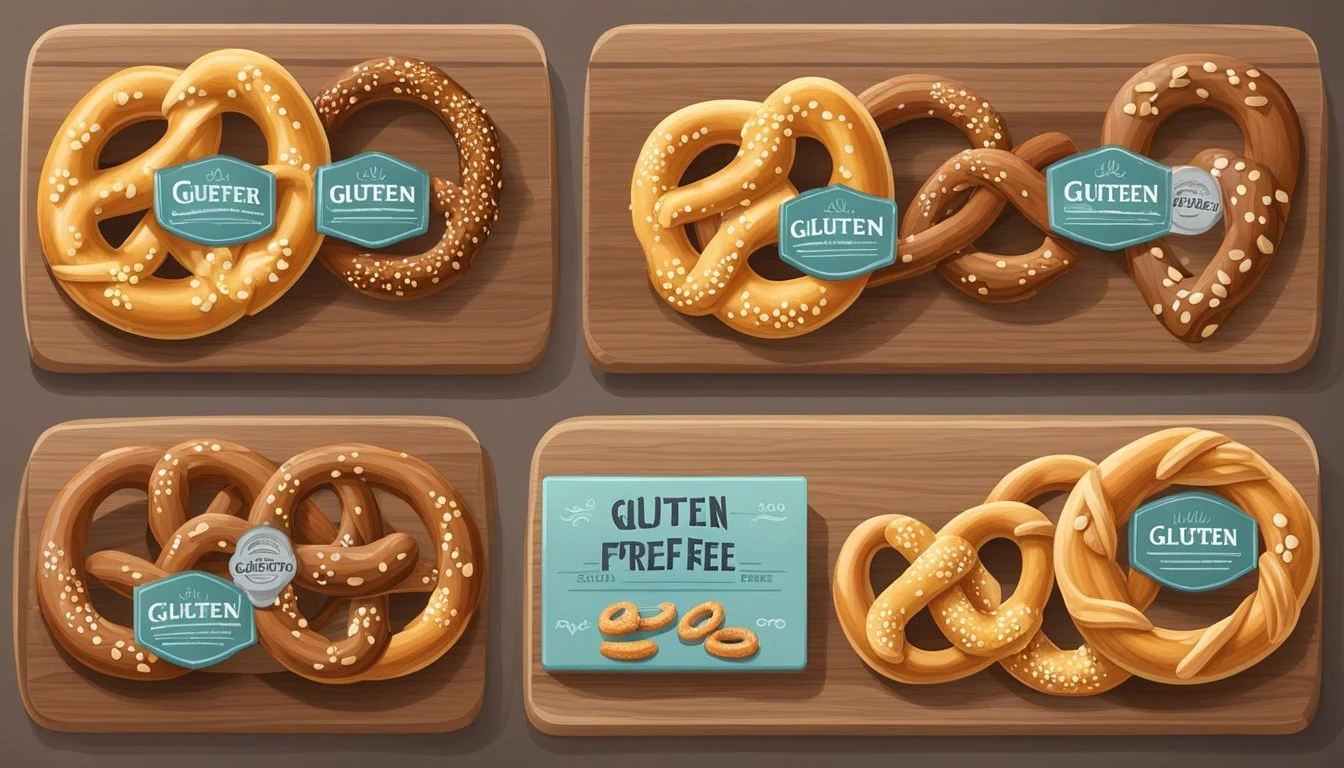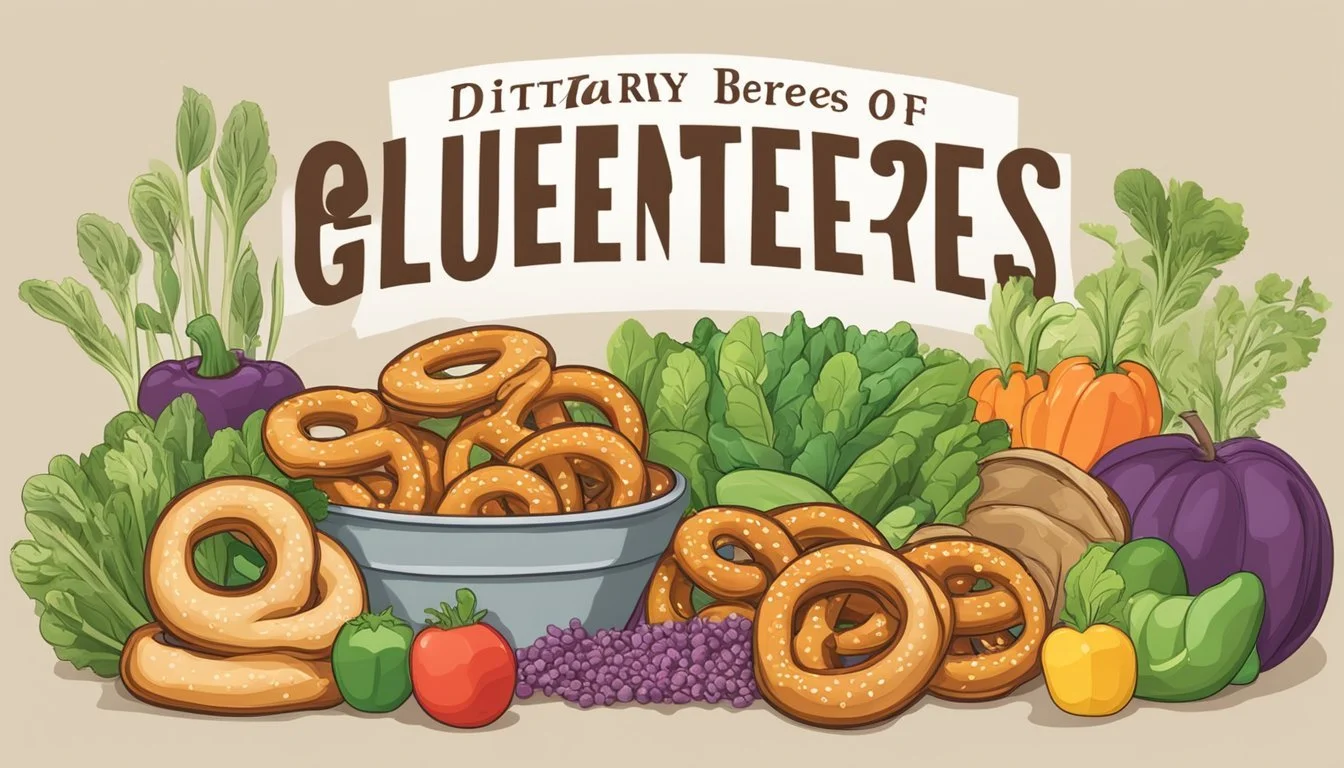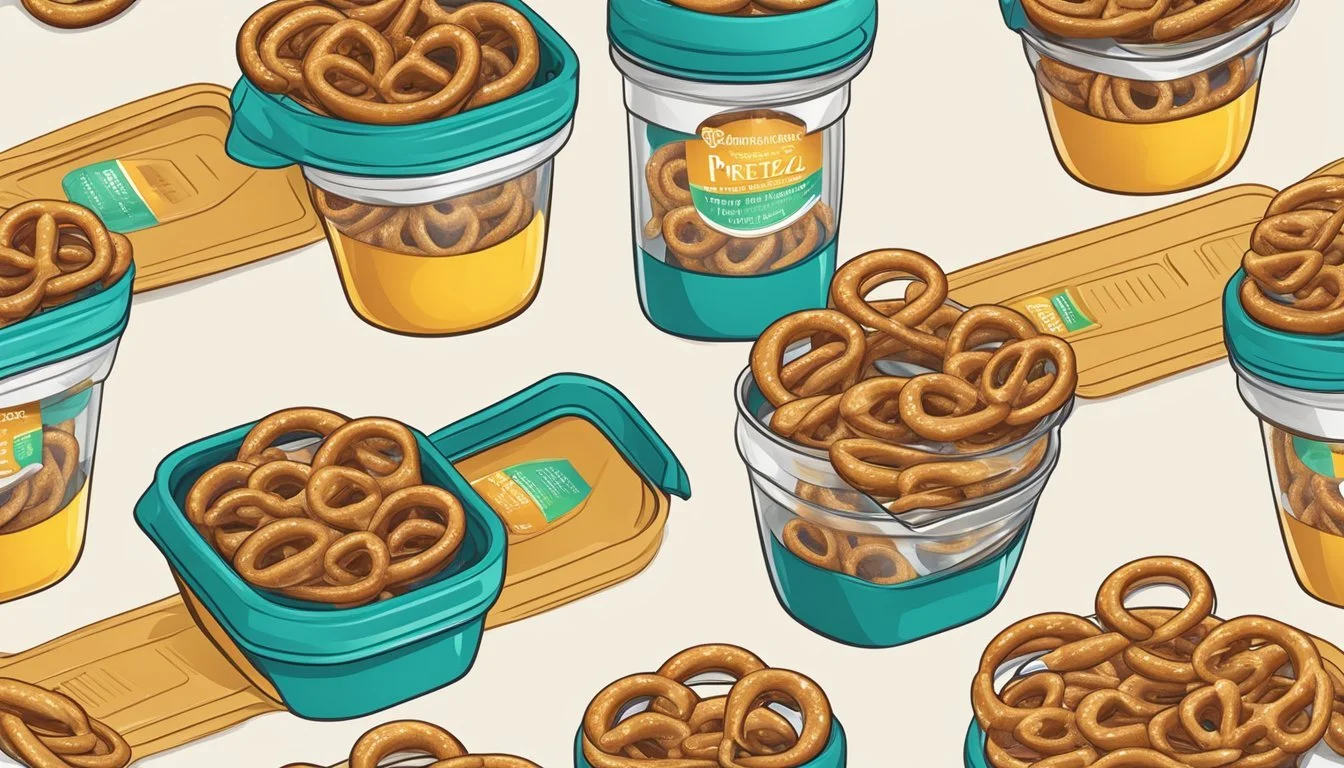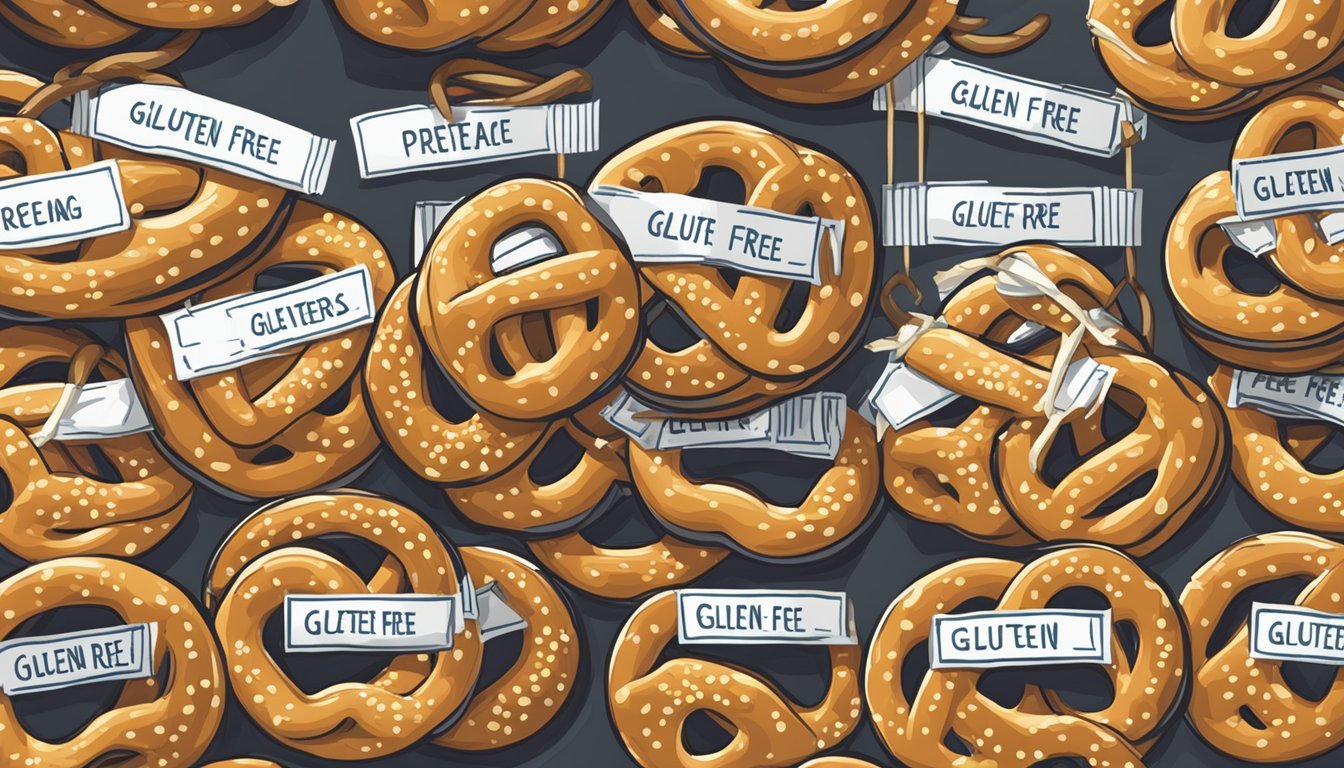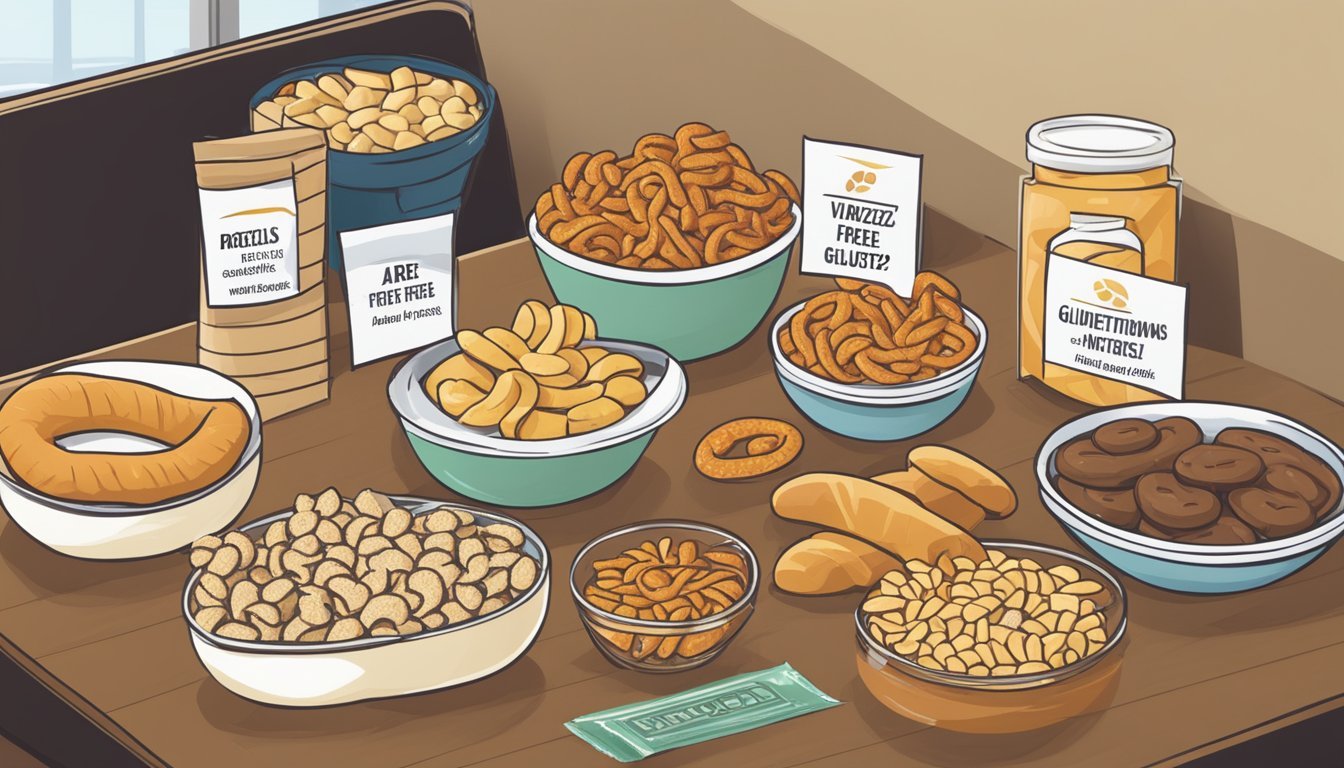Are Pretzels Gluten-Free?
Unveiling the Truth About This Popular Snack
Pretzels have long been a popular snack, cherished for their unique twist shape, crunchy texture and savory taste. Traditionally, they are made using wheat flour, which contains gluten, a group of proteins found in grains like wheat, barley, and rye. Since gluten is a key ingredient in conventional pretzel recipes, those standard varieties are not suitable for individuals with gluten-related disorders, such as celiac disease or non-celiac gluten sensitivity.
However, with the rise of dietary restrictions and increased health consciousness, the snack industry has seen an influx of gluten-free alternatives tailored to meet the needs of those avoiding gluten. Gluten-free pretzels are typically made from alternative flours and starches such as corn flour, potato starch, and tapioca starch to mimic the texture and flavor of their gluten-containing counterparts while providing a safe option for those with gluten intolerance.
Despite the availability of gluten-free options, consumers should scrutinize product labels to ensure the absence of gluten. Certified gluten-free pretzels are subjected to stringent testing to satisfy the requirements for individuals who cannot tolerate gluten in their diets. Careful selection of gluten-free pretzel brands and varieties allows those with dietary restrictions to indulge in this classic snack without compromising their health or well-being.
Understanding Gluten in Pretzels
Traditional pretzels, known for their distinctive twist and satisfying crunch, typically contain gluten because they are made with wheat flour. Gluten is a protein found in several types of grains, including wheat, barley, and rye. It's this protein that gives dough its elastic texture and helps it to rise when baked.
Those who deal with celiac disease, gluten sensitivity, or gluten intolerance need to avoid gluten as it can trigger harmful reactions. For individuals with celiac disease, consuming gluten leads to damage in the small intestine, which may result in various health issues.
However, not all pretzels contain gluten. In response to growing awareness and dietary needs, some brands have developed gluten-free pretzels using alternative ingredients. The most common flours used in gluten-free pretzel recipes include:
Rice flour
Corn flour
A blend of gluten-free grains
Even within gluten-free options, consumers should be cautious as some products may contain inflammatory grains or oils that can still cause discomfort or health issues for those with sensitivities or intolerances.
Here's a quick guide to understanding the gluten content in pretzels:
Ingredient Contains Gluten? Suitable for Gluten-Sensitive Individuals? Wheat Flour Yes No Barley Yes No Rye Yes No Gluten-Free Flours (e.g., rice, corn) No Yes Inflammatory Grains Varies Depends on Individual Sensitivity
Individuals with gluten-related health concerns should seek out products specifically labeled as "Gluten-Free" to ensure safety and compliance with their dietary requirements. Always remember to read labels carefully as cross-contamination can occur during manufacturing.
Ingredients Common in Traditional Pretzels
Traditional pretzels typically include a straightforward list of basic ingredients. These ingredients are essential to achieve the classic texture and taste that consumers expect from pretzels.
Wheat Flour: The primary ingredient in traditional pretzels is wheat flour. Wheat provides gluten, a protein that helps give the pretzel its structure and chewiness.
Water: Water is crucial to forming the dough. It activates the gluten in the wheat flour and dissolves the yeast, salt, and other ingredients for an even distribution within the dough.
Yeast: Yeast is a living organism that ferments the sugars in the flour, producing carbon dioxide and causing the dough to rise. This leavening agent contributes to the light and airy texture of the pretzel interior.
Salt: Salt serves two purposes in pretzel-making. It is a flavor enhancer and also strengthens the gluten network in the dough, improving texture.
Oil: Though not always present, some pretzel recipes call for oil. It can tenderize the dough by shortening gluten strands and add a subtle richness to the flavor profile.
Below is a simplified list of the common ingredients found in traditional pretzel dough:
Wheat flour
Water
Yeast
Salt
Oil (optional)
These core components are mixed, shaped into the classic pretzel form, and then briefly boiled in a solution of water and baking soda before baking. The baking soda bath gives pretzels their distinct brown crust and a slight alkaline flavor.
Defining Gluten-Free Pretzels
In the world of snack foods, pretzels traditionally contain gluten, a protein found in wheat, barley, and rye. However, gluten-free pretzels offer an alternative for those who avoid gluten due to celiac disease, gluten sensitivity, or other health reasons. Gluten-free pretzels must omit all gluten-containing grains and instead utilize alternative ingredients.
Common gluten-free flour substitutes include:
Rice flour: Often serves as the base flour in gluten-free pretzel formulations.
Tapioca starch: Provides chewiness and helps in texture formation.
Corn starch: Aids in creating a light and crisp texture.
Xanthan gum: A thickening agent that replaces gluten's elasticity.
A gluten-free pretzel should not possess any traces of gluten, and a certified gluten-free product assures that the pretzels meet strict standards for gluten content. This certification is crucial for individuals with celiac disease, as even small amounts of gluten can cause adverse reactions.
Manufacturers who produce gluten-free pretzels often highlight the use of these alternative ingredients on their labeling. These pretzels come in various shapes and sizes, maintaining the traditional pretzel form or offered as sticks, pieces, or miniatures.
Ingredient Purpose in Gluten-Free Pretzels Rice Flour Base flour for dough Tapioca Starch Adds chewiness and helps in texture Corn Starch Contributes to a crispier texture Xanthan Gum Mimics gluten's binding properties for elasticity
A gluten-free version ensures that individuals with dietary restrictions can still enjoy the salty snack without concern. Consumers should look for the gluten-free label to ensure they are getting a product that is safe for their dietary needs.
Identifying Gluten-Free Pretzel Brands
When searching for gluten-free pretzels, consumers have multiple brands to consider, each offering unique flavors and textures.
Snyder's makes gluten-free pretzels with a variety of flavors, such as honey mustard. Their gluten-free offerings are made with a mix of corn flour, potato starch, and tapioca starch for a crunchy texture.
Glutino is another brand that stands out for offering a nice selection of gluten-free pretzel options. Glutino's pretzels typically have a hearty crunch and are made from ingredients that do not contain gluten.
Snack Factory produces Gluten-Free Original Pretzel Crisps that are suitable for those with gluten sensitivities. These pretzels provide a thin, crisp alternative to traditional pretzels.
Quinn Snacks (What wine goes well with snacks?) offers pretzels that are not only gluten-free but also boast non-GMO and whole grain ingredients, making them a healthier choice for snack enthusiasts.
Gratify provides gluten-free consumers with a range of pretzel products, including twists and sticks that cater to different taste preferences and dietary requirements.
Utz has gluten-free alternatives within their snack selection, but consumers should always verify packaging labels to ensure the products meet their dietary needs.
Brand Notable Product Features Snyder's Variety of flavors, crunchy texture Glutino Hardy crunch, classic pretzel taste Snack Factory Thin and crispy, convenient for on-the-go snacking Quinn Snacks Non-GMO, whole grain ingredients Gratify Variety of shapes and sizes Utz Check packaging for gluten-free options
Individuals with celiac disease or gluten sensitivity should always look for products that are clearly labeled as "gluten-free." This label ensures that the pretzels have been produced without any gluten-containing ingredients and cross-contamination is minimized in facilities that adhere to strict gluten-free standards.
Reading Labels and Understanding Cross-Contamination
When someone is looking for gluten-free options, understanding food labels is crucial. Labels indicating "gluten-free" are regulated by the FDA to mean the food contains less than 20 parts per million of gluten. Individuals should diligently read the ingredient list to check for gluten-containing grains like wheat, rye, barley, and triticale. Ingredients derived from these grains, such as malt from barley, must also be avoided.
Here are items typically found on the ingredient list that indicate gluten:
Wheat (all species and hybrids)
Rye
Barley
Triticale and Kamut
Malt, malt flavoring, and malt vinegar
To minimize the risk of cross-contamination, consumers should choose products from grains, legumes, and seeds that feature a "gluten-free" claim on their packaging, as these are at higher risk for gluten cross-contact.
The presence of the "gluten-free" label on a package means safer options since it demonstrates that the manufacturer has followed protocols to avoid cross-contamination during production. However, caution is advised as cross-contamination can occur, particularly with products like pretzels that are often produced in facilities processing gluten-containing foods.
For the safest consumption of gluten-free products:
Prefer items specifically labeled as "gluten-free."
Be wary of bulk bins due to high cross-contamination risk.
Purchase brands dedicated to being entirely gluten-free to ensure the lowest risk of cross-contamination.
By adhering to these practices, consumers can make informed decisions and select safe options to maintain their gluten-free diet.
Dietary Benefits of Gluten-Free Pretzels
Gluten-free pretzels provide a suitable alternative for individuals following a gluten-free diet, often necessitated by conditions such as celiac disease. These pretzels enable such consumers to enjoy a crunchy snack without the gluten found in wheat-based products.
Calorie Content: Gluten-free pretzels are generally low in calories. They can serve as a light snack that can be included in a calorie-controlled diet.
Fat Content: They also tend to be low in fat, which may be advantageous for those monitoring their fat intake for health reasons.
Nutritional Profile: However, it's worth noting that not all gluten-free pretzels are created equal. While they are a safer choice for those with gluten sensitivity, one should be mindful of the variant chosen:
Some may contain higher nutrient values, with enriched flours providing additional vitamins and minerals.
Others might be lower in essential nutrients, depending on the flours and ingredients used.
Provider of Energy: The primary ingredient in gluten-free pretzels is usually a starch like rice or potato flour, which offers a source of carbohydrates for energy.
Inclusion of Fiber and Protein: These pretzels are not typically known for being rich in fiber or protein. However, certain brands may enhance their products with these nutrients to offer health benefits.
Moderation in Consumption: Despite the absence of gluten, moderation is key. Gluten-free pretzels still contain salt and carbohydrates, and they should be enjoyed as part of a balanced diet.
It's always prudent to scrutinize product labels for an accurate understanding of the nutritional content, as they can vary widely. Consumers should seek gluten-free pretzels that align with their health goals, perhaps choosing those with fortified nutrients when available.
Taste and Texture Variations in Gluten-Free Pretzels
Gluten-free pretzels come in a diverse range of flavors and textures. They are designed to cater to different preferences while adhering to the dietary restrictions of individuals with gluten intolerance or celiac disease.
Flavor: The flavor profile of gluten-free pretzels spans from classic sea salt to inventive variations. Popular flavors include honey mustard, cinnamon brown sugar, and hot buffalo wing. These seasonings aim to mimic the taste of traditional pretzels, adding layers of sweetness, tang, or spice.
Texture: Texturally, gluten-free pretzels vary from crunchy to chewy. The crunch factor is significant in pretzel pieces that are baked to achieve a satisfying snap. Alternatively, some recipes result in a softer, more chewy texture that mirrors the consistency of a fresh, dough-based pretzel.
Crunch: Achieved through precise baking times and methods.
Chewy: Developed through dough preparation and a baking soda bath.
Sweetness: Aside from savory options, sweetness in gluten-free pretzels is achieved through specific ingredients like cinnamon sugar, enhancing the treat's overall appeal without using gluten-based components.
Flavors Texture Sea Salt Crunchy Honey Mustard Crunchy/Sticky Cinnamon Sugar Chewy Buffalo Wing Crunchy/Spicy
Manufacturers ensure that despite the absence of gluten, these pretzels provide an enjoyable eating experience through careful selection of alternative flours and binding agents, which contribute to the desired texture. The ingredients are meticulously combined to create dough that is rolled, shaped, and cooked to perfection, promoting the authenticity of flavors and textures in every bite.
Making Gluten-Free Pretzels at Home
To create soft gluten-free pretzels, one begins with a careful selection of gluten-free flour, mixed with baking powder for leavening. For sweetening and to feed the yeast, brown sugar or honey is incorporated into the dough, while an egg helps to bind everything together for a smooth and stretchable consistency.
A stand mixer fitted with a paddle attachment makes combining the dry and wet ingredients effortless. After achieving a homogeneous dough, it must be allowed to rest until it doubles in size, typically within an hour. This is important for developing the texture.
One shapes the risen dough into the classic pretzel form on a baking sheet lined with parchment paper to prevent sticking. A crucial step follows—giving the pretzels a quick dip in a baking soda bath. This mixture typically includes boiling water and baking soda, and sometimes sugar, which contributes to their distinct color and flavor.
A preheated oven—normally set at a high temperature, around 450°F (232°C)—is the final stage where the pretzels attain their characteristic golden exterior. It's essential to observe the pretzels as baking times can vary according to size. After baking, the pretzels should present a crisp exterior and a soft interior.
To cater to dietary restrictions, the recipe can be adjusted to be dairy-free by substituting any dairy ingredients with their non-dairy counterparts. Utilizing instant yeast may reduce preparation time by eliminating the need for proofing, which is ideal for those seeking a quicker process without sacrificing quality.
For those without a stand mixer, a common whisk and some elbow grease during the mixing stage can suffice, though the dough's consistency should be closely watched, and adjustments in water or flour made as necessary. Remember not to overcrowd the pretzels on the baking sheet, as they need space to expand during the baking process.
Popular Gluten-Free Pretzel Recipes
Gluten-free pretzel recipes have evolved, providing delicious alternatives to their wheat-based counterparts. Individuals with gluten intolerance or celiac disease can enjoy pretzels made from various gluten-free flours.
Soft & Chewy Gluten-Free Pretzels: These pretzels often use a blend of gluten-free flours, such as rice or tapioca starch, to emulate the classic texture. They may include xanthan gum to replicate gluten’s elasticity. A defining step involves boiling the shaped dough in a mixture of baking soda and sugar to achieve the pretzel's traditional exterior.
Gluten-Free Pretzel Crisps: These snacks are a lighter, crunchier version of the classic pretzel. Many recipes utilize potato starch or whole grain sorghum for their base, creating a satisfying snap. These crisps can be topped with a variety of seasonings, such as sea salt, garlic powder, or cinnamon sugar.
Soft Auntie Ann's Style Pretzels: Mirroring the mall favorites, these gluten-free variants use a mixture that might include buttermilk powder and cream of tartar alongside gluten-free flours like potato flour for tenderness. They are often enjoyed with mustard or warm cheese dip.
Variety Key Ingredient(s) Notable Feature Soft & Chewy Rice flour, tapioca starch Baking soda bath for pretzel crust Pretzel Crisps Potato starch, sorghum flour Seasoned toppings, such as cinnamon sugar Soft Auntie Ann's Style Buttermilk powder, potato flour Buttery flavor, served with dips
These gluten-free pretzel recipes deliver on taste and texture, ensuring the classic pretzel experience is accessible to those avoiding gluten, while also providing a variety of choices to cater to different preferences.
Storing and Keeping Gluten-Free Pretzels Fresh
Proper storage is key to maintaining the freshness of gluten-free pretzels. They should be kept in an airtight container to prevent exposure to moisture and other environmental factors which can make them soft or stale. For maximum shelf life, the container must seal properly; options include plastic zip-top bags or containers with tight-fitting lids.
If the pretzels won't be consumed within a few days, freezing is an excellent option. To freeze gluten-free pretzels, one should ensure they're cooled completely before placing them in a freezer-safe airtight container or bag. They can be frozen for up to three months. When ready to eat, one can thaw them either at room temperature or by warming them in the oven for a crispier texture.
The shelf life of gluten-free pretzels typically spans a few days to a week when stored at room temperature. Humidity and heat can shorten this period, so finding a cool, dry place for storage is preferred. It's advisable to consume the pretzels within this timeframe to enjoy their optimal taste and texture.
Room Temperature Storage: Keep in a cool, dry place away from direct sunlight.
Refrigeration: Not recommended as it can induce moisture and make the pretzels soggy.
Freezing Instructions:
Cool the pretzels completely after baking.
Place them in a freezer-safe airtight container or bag.
Use within three months; thaw at room temperature or warm in the oven.
Remember, the methods and timing of storage will impact the pretzels' taste and quality.
Comparing Costs: Gluten-Free vs. Regular Pretzels
When individuals follow a gluten-free diet, they often find that pricing can be a significant differentiator between gluten-free and regular products. Regular pretzels, typically made from wheat flour, come at a lower cost due to more accessible ingredients and established manufacturing processes. Conversely, gluten-free pretzels incur additional costs due to alternative flour blends, such as corn flour, potato starch, and tapioca starch, which are necessary to replicate the texture and taste without the presence of gluten.
A comparison of costs between the two types shows that gluten-free pretzels are generally priced higher. For instance, a standard bag of regular pretzels might cost around $1.50 to $3.00 for an 8-ounce package. Gluten-free options, however, can range from $2.70 to $5.00 for a similar size, depending on the brand and where the product is purchased.
Here's a quick breakdown:
Pretzel Type Size of Package Expected Price Range Regular 8 ounces $1.50 - $3.00 Gluten-Free 8 ounces $2.70 - $5.00
The price disparity reflects not only the cost of specialty ingredients but also the smaller production scales and the often-stringent certification processes to ensure the product is truly gluten-free. While the prices for gluten-free pretzels may be higher, consumers with celiac disease or gluten sensitivity consider it a necessary expense for their diet and health.
Exploring Pretzel Alternatives and Related Snacks
When individuals cannot consume traditional wheat-based pretzels due to gluten intolerance, finding suitable alternatives becomes essential. For those craving the crunch and flavor of pretzels, grain-based options might include rice flour or cornstarch. Some brands craft gluten-free pretzel variations made from a blend of corn flour, potato starch, and tapioca starch, meeting the needs of a gluten-free diet while providing a similar mouthfeel and taste to conventional pretzels.
Baked goods like gluten-free muffins and cookies also serve as enjoyable treats. They can be made using alternative flours from seeds or grains like quinoa and amaranth. Vegetables, either raw or baked into chips, present a nutritious and naturally gluten-free option, along with a satisfying crunch.
Snack foods extend to include offerings like FitJoy products, which are often gluten-free and provide a range of snacks from bars to grain-based crisps. Furthermore, various starches such as chickpea flour or lentil flour offer another base for making gluten-free snack alternatives.
Gluten-Free Grains and Seeds:
Quinoa: Rich in protein and fiber
Amaranth: High in nutrients and a protein boost
Chia Seeds: Offer a crunch and are nutrient-dense
Alternative Gluten-Free Snack Options:
Vegetable Chips: Kale, beetroot, or sweet potato slices baked into chips
Eggs: Hard-boiled as a protein-rich snack
FitJoy: Range of gluten-free bars and crisps
For those seeking to bake their own gluten-free snacks, a variety of gluten-free flour blends are available on the market that can mimic traditional flour. These are useful for creating homemade muffins, cookies, and other baked goods. With an increasing number of gluten-free options, those with gluten sensitivities can enjoy a diverse range of snack foods without compromising flavor or dietary needs.

